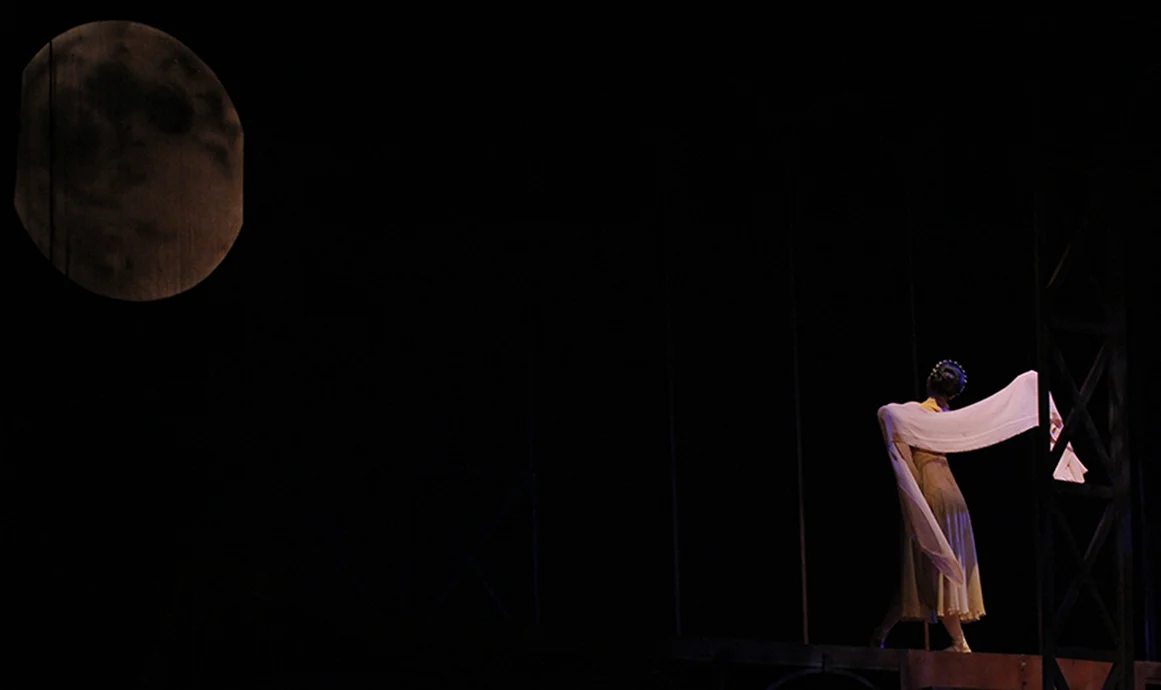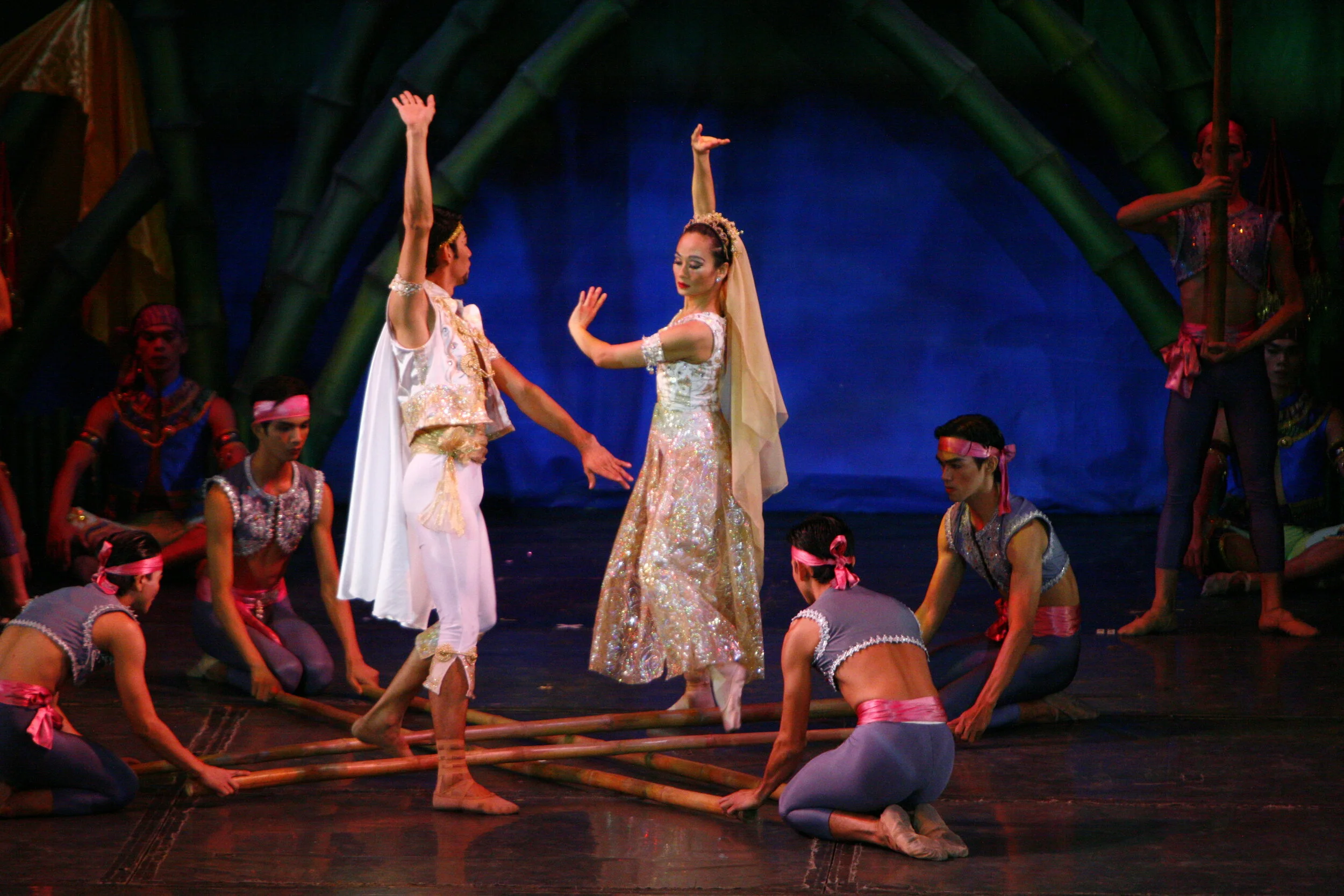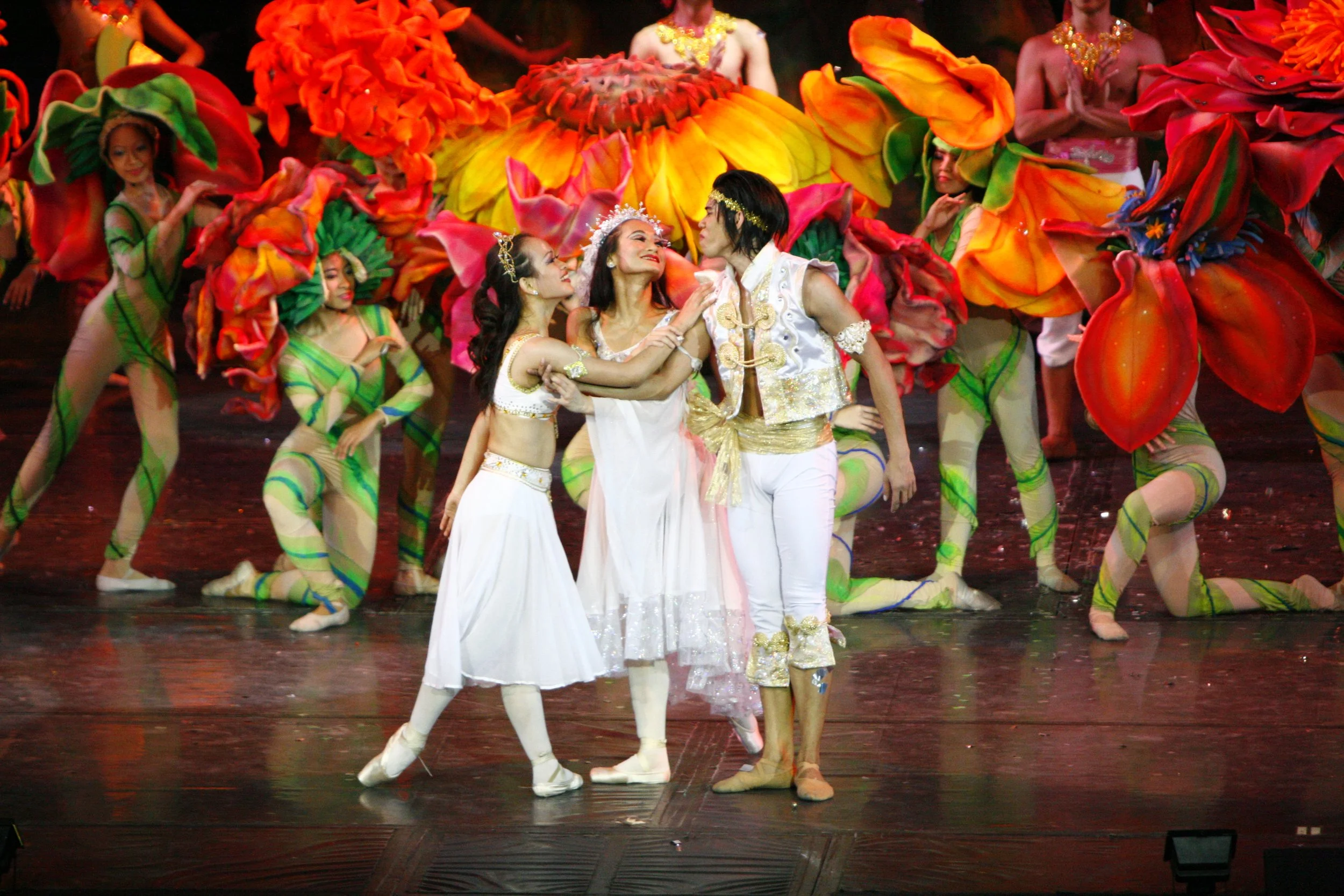Choreography in Focus: Alamat: Si Sibol at Si Gunaw
The goddess Luningning (Lisa Macuja-Elizalde) lives in the Sky World and looks after Nature.
Love for nature and environmental protection are the themes underscored in Alamat: Si Sibol at Si Gunaw, which Ballet Manila premiered in 2009.
The warrior-king Kapuy (Nazer Salgado) makes quite an entrance, atop an “elephant” and ushered in by his men.
Based on the children’s book by Ed Maranan, it tells the story of the goddess Luningning, caretaker of Nature, who marries the mortal king Kapuy. She gives birth to twins Sibol (Bloom) and Gunaw (Doom) who eventually become, respectively, the nurturer and destroyer of the environment. Luningning must step in to reconcile the two, paving the way for their world to flourish once more.
The task of creating the dance that would involve forest maidens and warriors, flowers and butterflies and other elements of spectacle fell to resident choreographers Osias Barroso and Gerardo Francisco. The two had first collaborated for Pista in 2008, but this time it would be a production with two full acts, requiring more elaborate scenes and movements.
The wedding of Luningning to Kapuy is based on the Singkil dance.
Barroso would write in his choreographer’s notes back then, “This new task is quite challenging but at the same time, self-fulfilling… Knowing that at the end of the performance, the audience will be reminded of two things – Family and Nature, two of the most irreplaceable things in life.”
Long fascinated with Filipino-inspired dances, Francisco for his part was thrilled to blend contemporary and folk movements for Alamat: Si Sibol at Si Gunaw. For him, mixing energetic and stylized movements into a cohesive piece was an experiment he enjoyed doing.
The twins Sibol (Yanti Marduli) and Gunaw (Francis Cascaño) are at odds with each other as one is bent on nurturing and the other on destroying.
The production was inspired by the Filipino Muslim culture, fashion, music and dances.
The designs and movements characterizing ethnic communities in Southern Philippines inspired the two choreographers in shaping the piece. Thus, the Muslim Suite in the production attempts to reflect the mysticism, royalty, and beauty of the Filipino Muslim culture, fashion, music and dances. Accompanied by the musical instruments agong and kulintang, intricate hand and arm movements were used to complement the colorful costumes of the characters.
Alamat: Si Sibol at Si Gunaw blends contemporary and folk movements.
The wedding of Luningning to Kapuy was based on the Singkil dance that, in turn, was based on the Maranao’s epic of “Darangan.”
As with previous Ballet Manila dance extravaganzas such as Tatlong Kuwento ni Lola Basyang, Alamat: Si Sibol at Si Gunaw made use of music by various Filipino artists. Arrangers Mon Faustino and Noel Zarate threaded together the music of various Filipino artists including George Canseco, Willy Cruz and Edru Abraham and his Kontra-Gapi Ensemble.
“This combination of creative minds and hearts is more than any choreographer can ask for,” enthused Barroso back then. Prior to opening night, he just had one wish: “We hope the experience of watching this show, so lovingly prepared for your viewing pleasure, will be as magical as the experience of putting it together!”
Dancers moved to music made by the indigenous instruments agong and kulintang.
Photos by Ocs Alvarez








